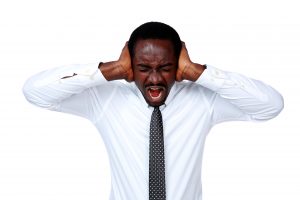I. Introduction
The landscape of behavioral health care is profoundly shaped by the experiences of those who provide care, particularly in relation to vicarious trauma. Caregivers often encounter the emotional and psychological burdens of their clients, which can lead to significant stress and potential trauma as they navigate the complexities of their roles. As evidenced by recent studies, understanding the context of these experiences is crucial in fostering effective support systems for caregivers. For instance, the supportive relationships built between medical providers and older LGBT adults have shown to enhance care delivery, indicating that trust plays a vital role in coping mechanisms for both caregivers and clients (Burton et al., 2020). Furthermore, initiatives like the Positive Youth Justice Initiative reveal how systemic changes can improve outcomes for vulnerable populations, highlighting the need for caregivers to be equipped with comprehensive resources to handle vicarious trauma effectively (N/A, 2016). Thus, addressing these challenges is essential in promoting resilience among behavioral health care givers.
A. Definition of vicarious trauma
Vicarious trauma, often experienced by behavioral health care providers, refers to the profound emotional and psychological effects that arise from exposure to the traumatic experiences of others. This phenomenon encompasses a range of symptoms similar to those of post-traumatic stress disorder, including emotional numbing, avoidance behaviors, and intrusive thoughts. The nature of the work performed by caregivers, particularly in high-stress environments such as those dealing with survivors of violence, contributes significantly to the risk of developing vicarious trauma. For instance, the restoration process of survivors of Domestic Minor Sex Trafficking reveals that care providers often grapple with emotional responses to clients’ unresolved traumas, which can hinder effective support and recovery (Lister et al., 2017). Moreover, engagement with families impacted by opioid addiction underscores the psychological toll on caregivers dealing with traumatic grief, emphasizing the need for targeted resources and education to mitigate these effects (Weiss et al., 2024).
B. Importance of behavioral health care givers
The role of behavioral health care givers is crucial in managing not only their patients’ needs but also their own, as they often encounter vicarious trauma through their daily experiences. Behavioral health care givers are uniquely positioned to recognize the impact of trauma on mental health, thus facilitating comprehensive support for their patients. However, as studies indicate, the emotional labor associated with witnessing trauma can lead to burnout and secondary traumatic stress among caregivers themselves, especially intensified during crises such as the COVID-19 pandemic (Collins et al., 2023). The integration of trauma-informed care (TIC) within healthcare settings can be pivotal in mitigating these adverse effects, promoting a supportive environment that addresses both caregiver and patient needs (Stout et al., 2024). Consequently, fostering resilience among these crucial professionals not only enhances their well-being but also improves the quality of care provided, ultimately benefiting the broader healthcare system.
C. Overview of the impact of vicarious trauma on caregivers
The impact of vicarious trauma on caregivers in behavioral health settings can be profound and multifaceted, as they often bear witness to the trauma experienced by their clients. This secondary exposure can lead to emotional distress, burnout, and diminished job satisfaction, ultimately affecting the quality of care delivered. Caregivers may develop symptoms similar to those of primary trauma victims, experiencing anxiety, depression, and even a sense of helplessness. As noted in programs like the Positive Youth Justice Initiative (PYJI), addressing the systemic issues that contribute to caregiver strain is vital for fostering resilience and ensuring effective support for both caregivers and youth in the justice system(N/A, 2016). Additionally, understanding demographic factors—such as the unique needs of older LGBT adults—highlights the necessity of creating trusting environments where caregivers can process their experiences without stigma, thereby improving overall care delivery(Burton et al., 2020).
II. Understanding Vicarious Trauma
The concept of vicarious trauma is particularly pertinent for behavioral health caregivers who routinely confront the emotional and psychological impacts of their clients experiences. As these professionals witness the trauma and suffering of those they serve, they may endure secondary traumatic stress, which can lead to significant mental health challenges, including burnout and compassion fatigue. In light of the COVID-19 pandemic, the prevalence of vicarious trauma among healthcare providers has become even more pronounced, exacerbated by the toll of direct exposure to traumatic events in clinical settings (Collins et al., 2023). Furthermore, caregivers with external responsibilities, such as caring for dependents, are likely to experience heightened stress levels, complicating their ability to cope effectively with the demands of their profession (Javangwe et al., 2020). Recognizing and addressing these factors is crucial for developing supportive frameworks that foster resilience and promote mental well-being among behavioral health caregivers.
Vicarious trauma can challenge any caregiver, counselor, pastor, or educator. When hearing about a horrible story about abuse, it is only natural to feel repulsed by the details and pain someone feels. These stories can trigger not only our natural disgust but also potentially things in the past. Compton uses the term absorption vulnerability to describe the indirect trauma. Due to long hours, lack of support, and lack of trauma training, professionals can begin to absorb trauma that can filter into one’s life. This has nothing to do with burnout but has everything to do with the filtering of trauma. This indirect trauma can negatively effect world views, beliefs, relationships at home, as well as cause an existential crisis and impact on faith (Compton, 2024, p.236-237). Absorption vulnerability can also be effected by personal trauma history as well as one’s personal triggers.
A. Psychological effects on caregivers
The psychological toll on caregivers, particularly those working in behavioral health settings, is often profound and complex. These individuals frequently encounter the traumatic experiences of their clients, which can result in vicarious trauma, a phenomenon characterized by emotional distress stemming from secondary exposure to trauma. Studies suggest that caregivers who engage with trauma narratives are at risk of developing Secondary Traumatic Stress (STS), influencing their mental health and overall well-being (Comstock et al., 2017). For instance, the impacts may manifest as anxiety, depression, or burnout, significantly affecting caregivers’ ability to provide effective care. Furthermore, the dynamics within marginalized populations, such as older LGBT adults, add layers of complexity to this scenario, as these individuals navigate societal stigmas while seeking care (Burton et al., 2020). Thus, fostering supportive environments and implementing self-care strategies are essential to mitigate the psychological effects experienced by caregivers in these challenging roles.
B. Signs and symptoms of vicarious trauma
Vicarious trauma significantly affects behavioral health caregivers, manifesting through various signs and symptoms that can hinder their professional efficacy and overall well-being. These symptoms often include emotional exhaustion, a diminished sense of personal accomplishment, and increasing cynicism towards clients. Caregivers may also experience intrusive thoughts related to their clients’ traumatic experiences, leading to heightened anxiety and emotional disturbances that compromise their ability to provide empathetic care. Moreover, physical symptoms such as fatigue and insomnia may emerge as caregivers attempt to navigate the emotional burden of their profession. The impact of vicarious trauma extends beyond individual symptoms, potentially influencing overall team dynamics and workplace morale within healthcare settings. Studies indicate that training and resources tailored to address this phenomenon can enhance caregivers readiness and resilience, ensuring they remain competent in providing essential services despite the challenges posed by vicarious trauma (Foster et al., 2017), (Jones-Ramirez et al., 2022).
In addition, vicarious trauma can lead to avoidance in helping others, or over involvement. In regards to overinvolvement, some counselors enter into a “savior complex”. This leads to improper management of the client because one tries to do everything even beyond abilities. Others over involve due to their own past wounds and trying to fix others. Whether avoiding or over involving, trauma can push individuals in the helping fields into multiple directions that lack boundaries. It is important to be aware of vicarious trauma as well as absorption vulnerability within oneself. When trauma indirectly affects, one is no longer capable of co-regulating and helping others in a healthy and professional way (Compton, 2024, p. 241-243).
C. Differences between vicarious trauma and burnout
In examining the nuances between vicarious trauma and burnout, it is essential to recognize how each condition uniquely affects behavioral health care providers. Vicarious trauma typically arises from the repeated exposure to clients’ traumatic experiences, leading to shifts in the caregiver’s worldview, emotional responses, and their relationships. Conversely, burnout is often characterized by emotional exhaustion, depersonalization, and a diminished sense of personal accomplishment, stemming primarily from prolonged stress and an overwhelming workload. Research indicates that individuals employing effective coping strategies, such as emotion-focused or problem-focused approaches, are less likely to succumb to burnout, even when engaged with trauma-affected populations (Baniewicz et al., 2015). Furthermore, the organizational culture significantly impacts these phenomena; strong support systems are crucial in mitigating both vicarious trauma and burnout among caregivers (Handran et al., 2013). Ultimately, understanding these differences is vital for developing targeted interventions to support the mental health of those in caregiving roles.
III. Factors Contributing to Vicarious Trauma in Caregivers
The experience of vicarious trauma in caregivers often stems from a complex interplay of individual and relational factors that may heighten their emotional distress. For instance, non-offending caregivers (NOCs) of children with trauma histories frequently grapple with their own secondary traumatic stress (STS), influenced by their relationships with the perpetrators and personal trauma histories, as evidenced by (Mangold et al., 2022). Furthermore, the emotional burden of caregiving is compounded when caregivers perceive discrepancies between their assessments and childrens self-reported PTSD symptoms, creating a cycle of anxiety and helplessness that could exacerbate vicarious trauma. In the context of severe health conditions, such as patients in a persistent vegetative state, caregivers also confront the ethical and emotional challenges of prolonged care, which can lead to burnout and discomfort due to the ambiguous nature of the patients’ conditions, as illustrated in (COSTANTE et al., 2024). Understanding these underlying factors is crucial for developing targeted support interventions for caregivers.
A. Nature of the work in behavioral health
The nature of work in behavioral health is inherently demanding, characterized by a profound engagement with the trauma and suffering of clients. Professionals in this field, such as therapists and social workers, often navigate the complexities of mental health challenges while simultaneously managing their own emotional responses to clients experiences. This dual burden creates a propensity for vicarious trauma, wherein caregivers find themselves emotionally affected by the distress they witness (Javangwe et al., 2020). The implications of this phenomenon are significant, particularly as many caregivers also face additional stressors related to their personal lives and responsibilities (Stout et al., 2024). Consequently, the interplay between professional duties and personal well-being underscores the need for effective coping strategies and institutional support mechanisms. Understanding these dynamics is crucial for promoting resilience among behavioral health caregivers, ensuring they can provide the compassionate care necessary for their clients while safeguarding their own mental health.
B. Personal history and resilience of caregivers
Caregivers’ personal stories really do play a big part in how well they bounce back from the tough stuff they see, especially in behavioral health. You know, things like dealing with trauma in the past or being a caregiver in their own families? Those can actually make them stronger. They learn ways to cope and understand emotions better, which helps them handle the tricky parts of their jobs. This resilience is super important in tough places like oncology, where they’re always seeing patients and families go through really hard times. It’s easy to get burned out or feel too much compassion, so they need to take care of themselves. Understanding their own feelings and being able to deal with grief and trauma alongside their patients is key (Raimbault et al., 2024). What’s interesting is how the trauma clients experience can actually show up in the caregivers themselves. That whole connection between their own lives and what they do professionally? It just shows how important it is to have good support systems that help them build up their own resilience when they’re dealing with other people’s trauma (Loo et al., 2020).
C. Organizational culture and support systems
Organizational culture and support systems? They’re really intertwined, especially when we’re talking about vicarious trauma among behavioral health caregivers. Think of it like this: a supportive culture at work—one where people collaborate and trust each other—makes it easier for caregivers to share what they’re going through and ask for help. And when these cultures prioritize trauma-informed care, it’s a win-win. Not only does it help the caregivers, but it also improves the care clients receive, generally speaking. Now, as research points out (Aratani et al., 2007), good policies have to juggle best practices alongside things like financial support and teamwork across different systems. Plus, organizations need to focus on accountability and building the right infrastructure to keep these support systems going. It seems that by connecting organizational culture with trauma-informed policies, we can help behavioral health caregivers navigate those tough emotional parts of their job, which, ideally, leads to them being more resilient and doing better overall (Aratani et al., 2007).
IV. Strategies for Mitigating Vicarious Trauma
When it comes to behavioral health caregivers, dealing with vicarious trauma is common, so it’s important to have good ways to prevent and lessen its effects. One idea that’s been looked at is adding self-care training to school programs; doing this helps build strength and makes people more aware of themselves. Interestingly, when asked, music therapy clinicians mentioned various self-care methods. Still, more than half admitted their schooling didn’t really focus on teaching self-care, which really matters when you’re working with people who’ve been through trauma (Hearns et al., 2017). There are also programs like the Positive Youth Justice Initiative that really push for wraparound services and care that understands trauma. This shows how we need big changes to help caregivers do their jobs well (N/A, 2016). If we make self-care a priority and create places that offer support, behavioral health caregivers will be in a better spot to handle the emotional stress of their jobs. Plus, it can lower the chances of them going through vicarious trauma.
It is also important to remember that one can suffer trauma and dysregulation within a session. Whether hypo or hyperarousal, a counselor is not a robot to emotions. A counselor can become upset at how a client is acting, speaking, or even ignoring. The story can also effect the counselor. This is why it is critical to regulate emotions discreetly through grounding effects, or various anger or stress management techniques within a session.
A. Self-care practices for caregivers
Caregivers in behavioral health, dealing with vicarious trauma, are often under significant emotional and psychological duress. Consequently, self-care practices are crucial in offsetting secondary traumatic stress. Research indicates that cognitive-behavioral therapy and mindfulness can be effective strategies; for example, child welfare professionals, facing considerable emotional and mental demands, benefit from these (Presume et al., 2023). Moreover, educators working with students who have experienced trauma also stress how important self-care is to reduce the negative impact of secondary trauma in their day-to-day (Phillips et al., 2024). Not only do these practices assist caregivers in stress management, but they also generally improve their overall well-being, boosting their effectiveness in the caregiving role. A reliable self-care routine can really empower caregivers to remain resilient, which helps them provide necessary support.
B. Professional support and supervision
Within behavioral health, professional support alongside careful supervision is really key when it comes to lessening the impacts of vicarious trauma on caregivers. When mental health professionals are provided structured environments where they can talk about what they’re going through, this helps them regulate emotions, and it also makes them more resilient when facing the stressors that come with the job. As research suggests, those with less hands-on clinical experience may be more at risk of vicarious trauma, making continuous support and supervision throughout their careers even more vital (Mann et al., 2024). It’s also worth noting that certain studies have shown counselors involved in traditional psychotherapy tend to show reduced compassion fatigue compared to those just using self-care, non-clinical methods alone (Many et al., 2012). In most cases, fostering a support-focused culture by using supervision is incredibly important in helping caregivers handle the emotional demands of their job, protecting their mental health, and as well as the well-being of those they’re caring for.
Sometimes, the emotional boost comes from the reward of helping. While counselors can also vicariously suffer they can also vicariously celebrate. Seeing others heal can help esteem, boost one’s own resiliency, and help counselors have their own post traumatic growth (Compton, 2024, p. 243).
C. Training and education on vicarious trauma
It’s pretty clear that behavioral health caregivers face vicarious trauma quite often. That’s why solid training and education, really geared to what they go through, are a must. If training programs take secondary traumatic stress into account, they can seriously boost how well caregivers cope. And that’s a win-win for everyone involved—providers and clients alike. When caregivers grasp the stress process theory—(Smith et al., 2024) nails this—they’re in a better spot to spot where vicarious trauma comes from and how it shows up. That makes it easier to jump in with the right solutions. Then there are initiatives like the Positive Youth Justice Initiative, shown in (N/A, 2016). They push for a total approach that backs up caregivers with education, trauma-informed methods, and fixing the system itself. These kinds of efforts not only arm caregivers with the smarts to deal with vicarious trauma but also help create a space that supports healing for both sides. So, yeah, focused training and educational programs are super important for tackling the problems vicarious trauma throws at the behavioral health world.
Trauma Informed Care themed agencies should have training for all staff and help counselors be more aware of not only trauma without but also within individuals. Training in trauma informed care is essential for any agency and needs to be implemented through various staff meetings and seminars and workshops.
V. Conclusion
To sum up, the connection between behavioral health and vicarious trauma carries substantial weight for caregivers. These individuals often find themselves face-to-face with the intense emotions of their clients. As noted in the existing research, many caregivers wrestle with taking care of their own emotional health in tandem with providing critical support to those affected by trauma. Studies suggest that coping mechanisms play a vital role in shaping the intensity of secondary traumatic stress that caregivers experience. Emotion-focused or problem-focused techniques can be helpful in alleviating burnout symptoms (Smith et al., 2024). It’s also worth pointing out that a caregiver’s history, including past experiences of abuse, might amplify their susceptibility to vicarious trauma (Smith et al., 2024). Absorption Vulnerability is a key term in identifying the level of trauma counselors and professionals are experiencing. The understanding gathered from research on the experiences of foster parents clearly underlines the urgent need for dedicated interventions and resources that can strengthen the resilience of caregivers. Addressing the issues described is important for keeping our behavioral health support systems working long term.
A. Summary of key points
When we consider the difficult issues facing behavioral health professionals in dealing with vicarious trauma (VT), a few important aspects come to light. These aspects highlight the difficulties and the opportunities for effective action. For instance, initiatives such as the Positive Youth Justice Initiative (PYJI) show how a system can help young people involved in the justice system, reducing obstacles that make trauma worse for them (N/A, 2016). Also, vicarious trauma is common among those who provide services, so it is important to have complete interventions to lessen its effects. A scoping review shows that different interventions, such as psychoeducation and mindfulness programs, seem to help reduce secondary trauma stress and burnout. However, the current research is not always thorough or specific (Chesworth et al., 2021). Therefore, there’s a real need for interventions that are designed for the specific stressors that behavioral health caregivers face, as well as organizational strategies that support a helpful work environment.
B. Importance of addressing vicarious trauma
Ensuring quality care endures in difficult settings hinges on recognizing and managing vicarious trauma in behavioral health providers. These individuals frequently witness deep suffering, which, if unaddressed, may result in accumulating psychological distress. Mitigation strategies, like the Resilience and Coping for the Healthcare Community (RCHC), play a vital role by providing tailored support (Powell et al., 2019). Furthermore, the Positive Youth Justice Initiative highlights the necessity of systemic, trauma-informed changes to support caregivers and better outcomes for vulnerable populations (N/A, 2016). Generally speaking, when organizations prioritize the mental health of care providers, provider well-being is enhanced. This can, in most cases, reduce burnout. Ultimately, improved patient outcomes are seen in communities facing significant challenges; an improvement that stems from prioritizing the mental health of care providers.
C. Call to action for improved support for caregivers
It’s increasingly clear that caregivers need more support, especially in behavioral health, where the emotional strain can sometimes lead to what’s called vicarious trauma. Working often in really stressful situations, caregivers face significant chances of burnout and compassion fatigue, as they help patients and deal with emotional distress. Thinking about older LGBT adults, for example, shows how many still encounter societal barriers, which can affect whether they’re willing to seek good medical care (Burton et al., 2020). Also, studies on oncology staff point out that expressive therapies should be integrated in order to help build resilience and reduce emotional strain among caregivers (Raimbault et al., 2024). Generally speaking, by advocating for changes that prioritize caregiver wellbeing—like mental health resources, training in trauma-informed care, and peer support—we can maybe create a more sustainable healthcare system that acknowledges and deals with the big emotional challenges caregivers face every day.
Additional Blogs from AIHCP
Click here
Resource
Compton, L & Patterson T. (2024). “Skills for Safeguarding” A Guide to Preventing Abuse, and Fostering Healing in the Church”. InterVarisity Press
Additional Resources
Luster, R. (2022). “Vicarious Trauma: A Trauma Shared”. Psychology Today. Access here
Matejko, S. (2022). “What Is Vicarious Trauma?”. PsychCentral. Access here
Nash, J. (2024). “Vicarious Trauma: The Silent Impact on Therapists”. Positive Psychology. Access here
“Vicarious Trauma: What To Do When Others’ Distress Impacts Your Well-Being” (2024). Cleveland Clinic: Health Essentials. Access here






 By Lucy Peters,
By Lucy Peters,




